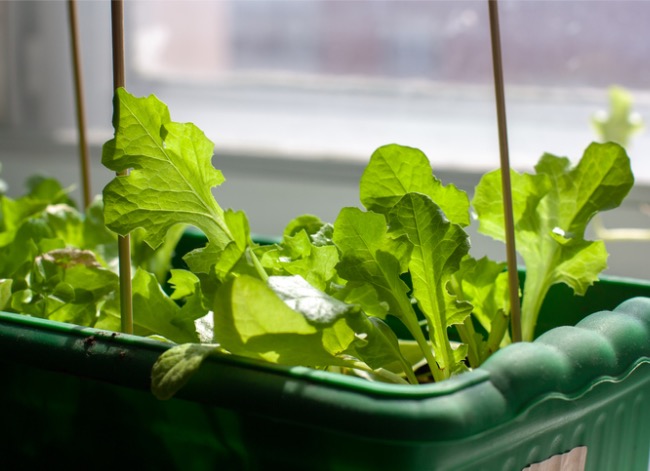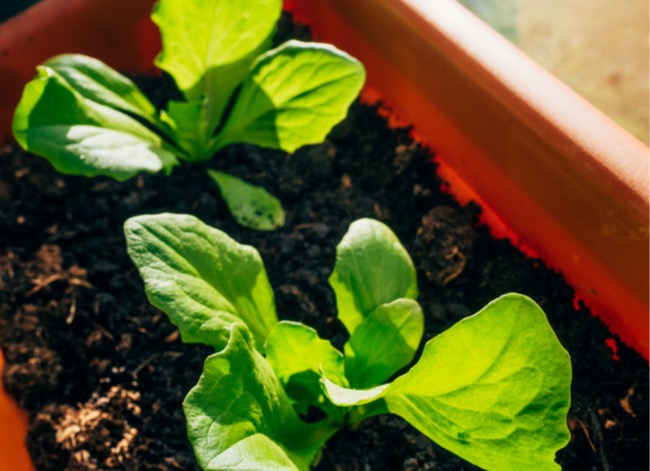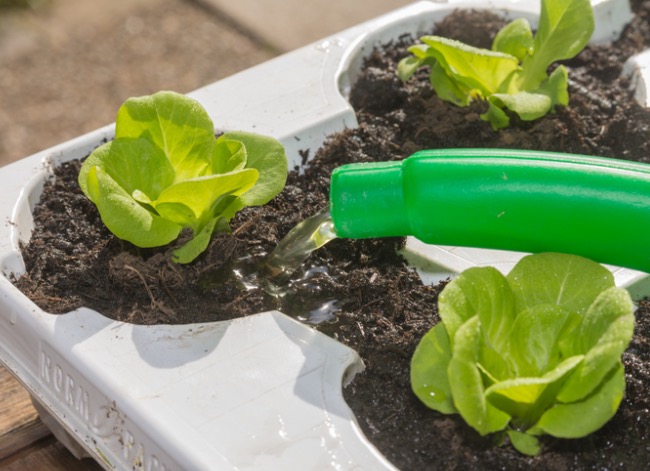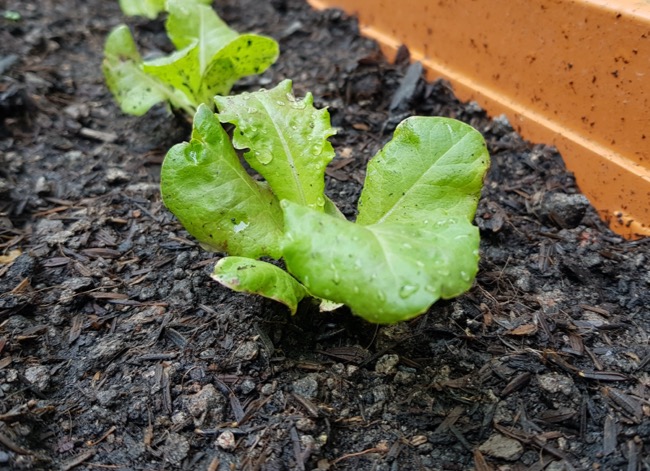

We may earn revenue from the products available on this page and participate in affiliate programs. Learn More ›
When considering how to grow lettuce indoors, keep in mind that there are a variety of ways to do so. We will discuss using seed starting or potting mix, but you also can purchase hydroponic grow kits that will allow you to raise lettuce in nutrient-infused water instead.
The loose-leaf type works best for indoor gardening, since its plants can thrive when set close together, while other varieties may not. For instance, growing butter lettuce indoors would require more space. But, if you give such a plant its own pot, you might be able to bring it to a head!
Tools & Materials
Bobvila.com may earn a commission from purchases made through these links.
- Shallow pots, flats, or seed starting containers
- Fluorescent or LED light fixture with bulbs (optional)
- Watering can or unperforated flat
- Humidity tray (optional)
BEFORE YOU BEGIN
Keep in mind that your cats might assume the greens are for them or that shallow containers full of soil have another purpose than the one you intended! For such reasons, it’s usually best to place your lettuce “houseplants” in a room shut off from your pets.
STEP 1: Choose where to grow lettuce indoors.
The location you choose for your lettuce garden should be brightly lit—as in sunny—for at least 6 to 8 hours per day. Since lettuce plants prefer cool, but not drafty, conditions, choose a sunny spot that also is away from radiators or heater registers and from exterior doors that could admit icy winds.
A south-facing bay window where the rays can enter from several different directions over the course of a day would be ideal. If you lack sunny windows, you might want to consider growing lettuce indoors under lights instead, either fluorescent or LED fixtures with reflectors.
Light fixtures with two to four bulbs will work best and don’t necessarily need to be labeled as grow lights to be effective. They actually should illuminate your plants more consistently than the sun does because they always shine, even when the sun doesn’t!

STEP 2: Plant lettuce seeds.
When growing lettuce from seed indoors, select time-tested classic varieties, such as Oak Leaf and Black Seeded Simpson or those described as “early,” which grow quickly. Early lettuce types include Waldmann’s Dark Green and Red Sails. You may also want to try baby spinach or a mesclun (greens) mix. To sow the seeds, use low containers such as shallow pots, seed-starting flats, or plastic produce boxes.
If the trays don’t already have drainage holes, create some before filling those containers with 3 to 4 inches of damp seed sowing mix or potting mix. Spread your seeds evenly over the surface of the mix and sprinkle a little of it over the seeds, covering them no deeper than 1/8 inch.
Then place the containers in their bright location, topped with plastic wrap to maintain moisture. Lettuce seeds germinate best at temperatures between 60 and 68 degrees Fahrenheit. They should sprout in about a week.
Related: 25 Ways to Enjoy Your Garden This Winter
STEP 3: Watering, temperature, and humidity.
After the seeds have germinated, remove the plastic wrap. When the seedlings have about four leaves each, transplant or thin them out so they stand 1 inch apart from each other. Water them as frequently as necessary to keep their soil lightly moist but not soggy.
If using small containers, you can water your plants from the bottom by placing them in an unperforated flat to which you have added an inch or so of water. The potting mix should draw up moisture through the drainage holes in the containers.
Then remove the containers from the flat and return them to their bright position, preferably placing them atop a humidity tray filled with gravel to allow them to drain and to keep the air around them moist. If possible, ensure that the temperature in the plants’ location remains between 65 and 70 degrees.

STEP 4: Providing the right light and fertilizer.
Plants grown in sunlight will lean toward it, so turn the containers every few days to keep your lettuce standing upright. If you are using a grow light instead, keep the bulbs about 6 inches above the tops of the plants.
Plug the light fixture into a timer that will keep those bulbs lit for 14 hours per day, say, from 7am–9pm. If the lettuce leaves begin to feel warm or their color appears bleached, raise the fixture. Should the plants seem to be growing lanky reaching for the light instead, lower the fixture.
If your potting mix doesn’t contain fertilizer, feed your plants about once a week with a high-nitrogen plant food mixed with water. A deodorized fish emulsion such as 5-1-1, used at the rate of about 1 tablespoon per gallon of water, will do, provided its fishy smell really has been removed!

Related: The Fastest-Growing Vegetables, Fruits, and Herbs for Impatient Gardeners
STEP 5: Harvesting indoor lettuce.
About a month after your lettuce sprouts or when it reaches 4 inches in height, it should be ready for harvesting. Using a sharp knife or scissors, cut off the outermost leaves from each clump, about 1 inch above the potting mix.
Then wash your hands before washing the lettuce thoroughly under running water, rubbing the leaves with your clean hands to rinse away possible bacterial residues from the soil or fertilizer. If you don’t plan to use the lettuce right away, dry it with a salad spinner and store it in a produce keeper in your refrigerator, washing it again before you use it. There, it should remain fresh for 7 to 10 days.
After the innermost leaves of the clumps also grow large enough to be harvested, keep your shorn plants in their brightly lighted positions. They may begin to grow again and produce another crop or two. You typically can harvest loose-leaf lettuces two to three times.
As the above directions illustrate, growing lettuce in pots indoors isn’t difficult. Just keep in mind that plants get most of their nourishment from the sun or other light, so sufficient illumination is vitally important to their health.
Also, be careful to wash that lettuce before you eat it, because salad greens contaminated with bacteria are one of the main causes of food poisoning. Although running water isn’t guaranteed to remove all such contamination, it does help, as does discarding damaged leaves.
Related: The Best Herbs to Grow Indoors
